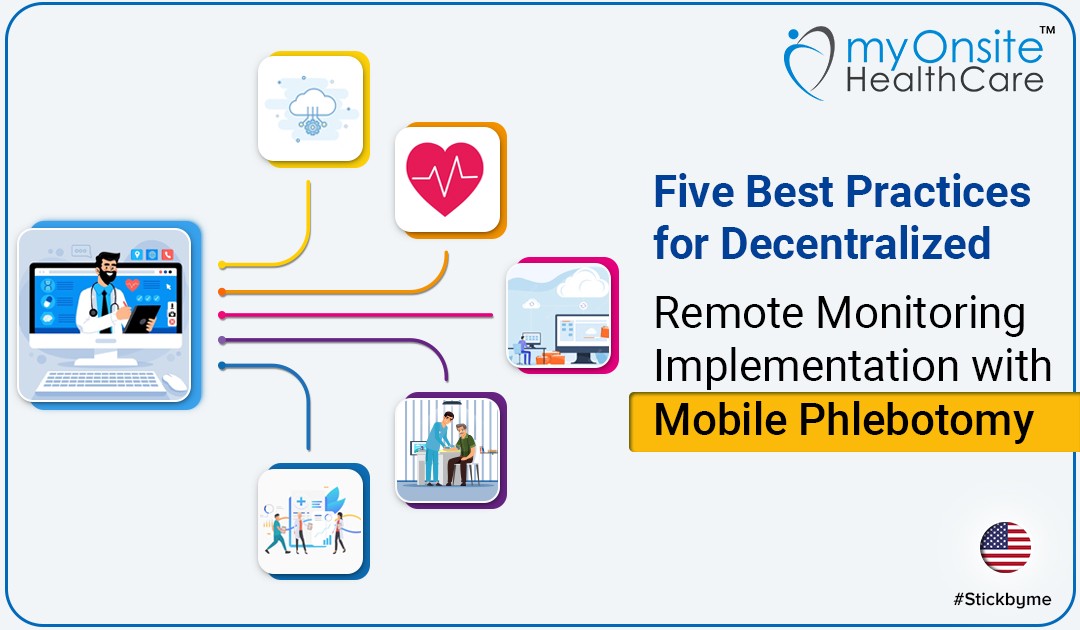Decentralized remote monitoring with mobile phlebotomy is a game-changing approach to conducting clinical trials. With this approach, clinical trial participants can have their blood samples collected in the comfort of their own homes. This not only increases patient convenience and comfort but also allows for more frequent blood sample collection, leading to more accurate and timely data collection. However, successfully implementing decentralized remote monitoring with mobile phlebotomy requires adherence to certain best practices. In this blog, we will explore five best practices for successfully implementing this approach.
Clear Communication with Patients
Clear communication with patients is a critical best practice when implementing decentralized remote monitoring with mobile phlebotomy. Patients must understand the process and requirements for mobile phlebotomy, including scheduling, preparation, and sample collection. Effective communication can ensure patient compliance and engagement throughout the trial.
Quality Control Measures
Quality control measures ensure the accuracy and consistency of mobile phlebotomy sample collection. This includes the use of standardized protocols, training and certification of phlebotomists, and regular quality control checks to ensure the accuracy of sample collection and processing. Quality control measures can reduce variability in sample collection and ensure that the collected data is of high quality.
Technology and Data Management
Technology and data management are critical for successfully implementing decentralized remote monitoring with mobile phlebotomy. This includes the use of electronic data capture systems, secure data management, and real-time monitoring of data. Effective data management can ensure that the collected data is accurate and complete and can enable timely decision-making by researchers.
Patient Safety and Compliance
Patient safety and compliance are essential when implementing decentralized remote monitoring with mobile phlebotomy. It is vital to ensure that patients receive the necessary support and guidance to ensure compliance with the study protocol. This includes providing clear instructions for sample collection, monitoring patients for adverse events, and supporting patients who experience any issues or concerns.
Regulatory Compliance
Finally, regulatory compliance is a critical best practice when implementing decentralized remote monitoring with mobile phlebotomy. This includes compliance with data privacy and security regulations, as well as adherence to Good Clinical Practice (GCP) guidelines. It is essential to work closely with regulatory agencies to ensure that all requirements are met and to implement appropriate controls to protect data and ensure patient safety.
Conclusion
Decentralized remote monitoring with mobile phlebotomy is a promising approach to conducting clinical trials that can improve patient engagement, data accuracy, and trial efficiency. Successful implementation of this approach requires clear communication with patients, quality control measures, technology and data management, patient safety and compliance, and regulatory compliance. By adhering to these best practices, researchers can ensure that the collected data is of high quality and that the trial is conducted safely and ethically.

